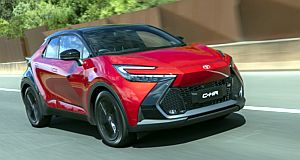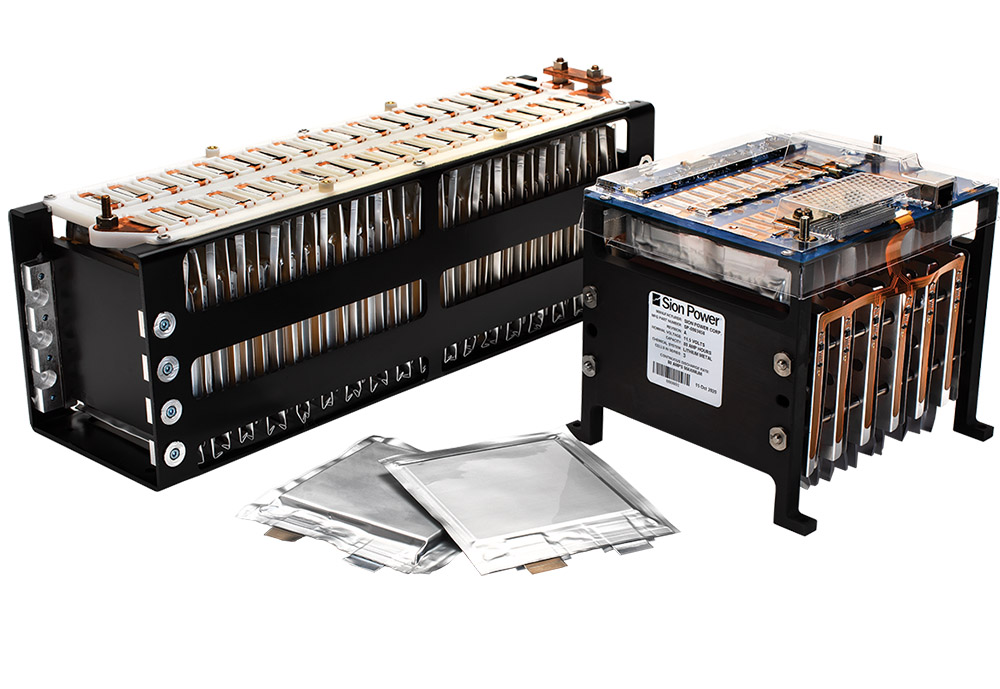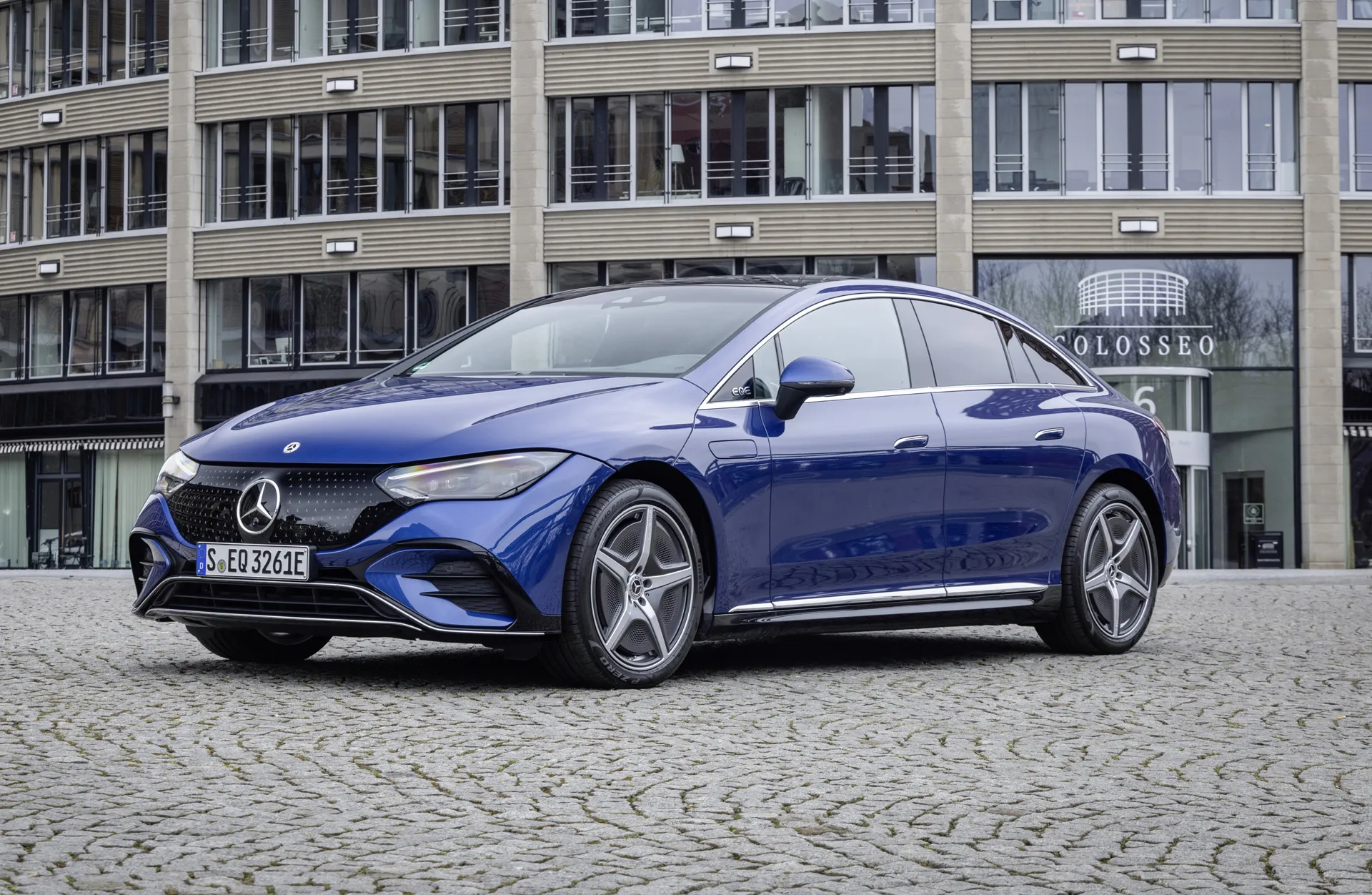Overview
TOYOTA says the second-generation C-HR offers buyers who don’t want or need the practicality of a Corolla Cross an alternative option in the small SUV segment.
And if you’re single, in a couple with no kids, or an empty nester, then it might be suited to your needs. But as with the first-generation version, this is not an ideal car for buyers who have kids and plan to use the back seat often.
If that sounds like you, you really should just buy a Corolla Cross.
Even so, it’s a tall ask this time around, with pricing having risen about 35 per cent for the C-HR range, thus positioning it in a different spot to the first-gen model. The new model is only sold in Europe and Australia, and it’s sourced from Turkey. So, it’s not the cheapest option for imports to our market.
The base grade GXL is $42,990 plus on-road costs, while the mid-tier Koba is $49,990 +ORC. The latter shares the same powertrain as the base car, and of course includes more kit, while the pricier again GR Sport – from an ambitious $54,990 +ORC – features a more powerful hybrid powertrain and all-wheel drive.
The GXL and Koba variants run a 1.8-litre four-cylinder petrol-electric powertrain, which is paired to a continuously variable transmission and front-wheel drive. It has a maximum combined output of 103kW, which is a bump over the last version, but hardly enthralling.
What is enticing is the official combined cycle fuel use figure: 4.0 litres per 100km.
The GR Sport variant get a larger-capacity, more powerful 2.0-litre engine with dual electric motors (one at the front axle, one rear) for all-wheel drive, and with a combined 146kW it is similar to what you get from a turbocharged Kia Seltos or Hyundai Kona.
Again, the plus side is its official combined cycle fuel use of 4.1L/100km.
Despite offering a completely new exterior look, the new C-HR runs the same wheelbase length and is a bit shorter nose-to-tail than the model it replaces. However, the brand’s new Hammerhead design gives it a far more pointed look than its predecessor. It also debuts flush-fit door handles for Toyota, and those rear handles are positioned lower on the door to appease parents of kids who couldn’t quite reach the last-gen model’s rear handles.
The interior of the new-gen model again features a driver-centric cabin, with a clearly delineated space between passenger and driver. Neither zone is especially roomy, and larger humans may find this car too squishy, no matter where they sit.
The new 12.3-inch touchscreen media system features sat nav, smartphone mirroring, DAB digital radio and acts as a monitor for a standard-fit surround-view camera, and while some menus aren’t that intuitive, it’s still better than some rivals.
There are physical controls for the climate system and seat heating (if fitted) below, while the GLX misses out on a wireless phone charger in the storage zone below, but there are decent cup holders between the seats, bottle holders in the doors, and a reasonable centre console section.
The shelf above the glovebox is handy, unless your passenger is a big body, then it just seems to take up precious space.
The back seat could be a deal breaker for buyers – but not because of a lack of space. At 182cm I could easily fit behind my driving position, but there’s a serious lack of consideration for those in the back. The view out is almost non-existent, the dark headliner makes it feel like you’re sitting at the end of a tunnel, and the plastic finishes on the doors are scratchy and nasty.
Plus there aren’t any directional air vents, and while you get a USB charger and map pocket in the top grades, there are no armrest/cupholders in any spec. At least you get bottle holsters in the door cards, but that’s it.
Boot space is reasonable, with GXL and Koba models offering 388 litres and the AWD GR Sport with 362 litres. There’s a space-saver in the GXL, but the others have a tyre repair kit. All have tyre pressure monitoring.
The standard safety gear list includes autonomous emergency braking with pedestrian, cyclist, junction and head-on detection, adaptive cruise control, lane keeping assistance, and a driver monitoring camera.
You’ll definitely appreciate the front and rear parking sensors with low-speed auto braking, and there’s a surround-view camera, plus blind-spot monitoring and rear cross-traffic alert. Plus, the top grades get a digital camera mirror, too, and the C-HR also scores 10 airbags.
There is a five-year/unlimited-kilometre warranty, plus if logbook servicing is maintained you get seven years of powertrain cover. Service with Toyota and you’ll be eligible for up to 10 years’ hybrid battery cover.
Service intervals are 12 months/15,000km, at $200 per visit for the first five years/75,000km.
Driving Impressions
The 1.8-litre hybrid system does not feel all that different compared with other Toyota hybrid models. With engine adjustments and a new lithium-ion battery, there is 13kW more and 0.3L/100km less, respectively, but if you’ve driven any other Toyota hybrid small car, it’s going to feel very familiar.
The powertrain will cleverly shuffle between petrol and electric (or combine them), but still with some trademark CVT whine. No issues with traction for this FWD model, either.
The first C-HR was fun, and this one is too, as it possesses a competent balance to its handling, with accurate and nicely weighted steering. The ride is better in the GXL, which rides on 17-inch wheels with higher-profile tyres, but even in the Koba it’s never too unsettled or uncomfortable.
The GR Sport runs the same MacPherson front, independent rear suspension setup, and likewise offers a good balance of comfort and control.
The AWD system still feels very front-biased but might offer the surefootedness you need if you’re driving in the wet or to the snow or gravel tracks to campsites. The 2.0-litre hybrid model’s performance is markedly more rapid, so if that’s also a priority for you, it might be worth spending up to the top-spec.
Is it more fun or more compelling than a Corolla Cross? Not really, considering the practicality compromises, but it does have a nimble and likeable character.



